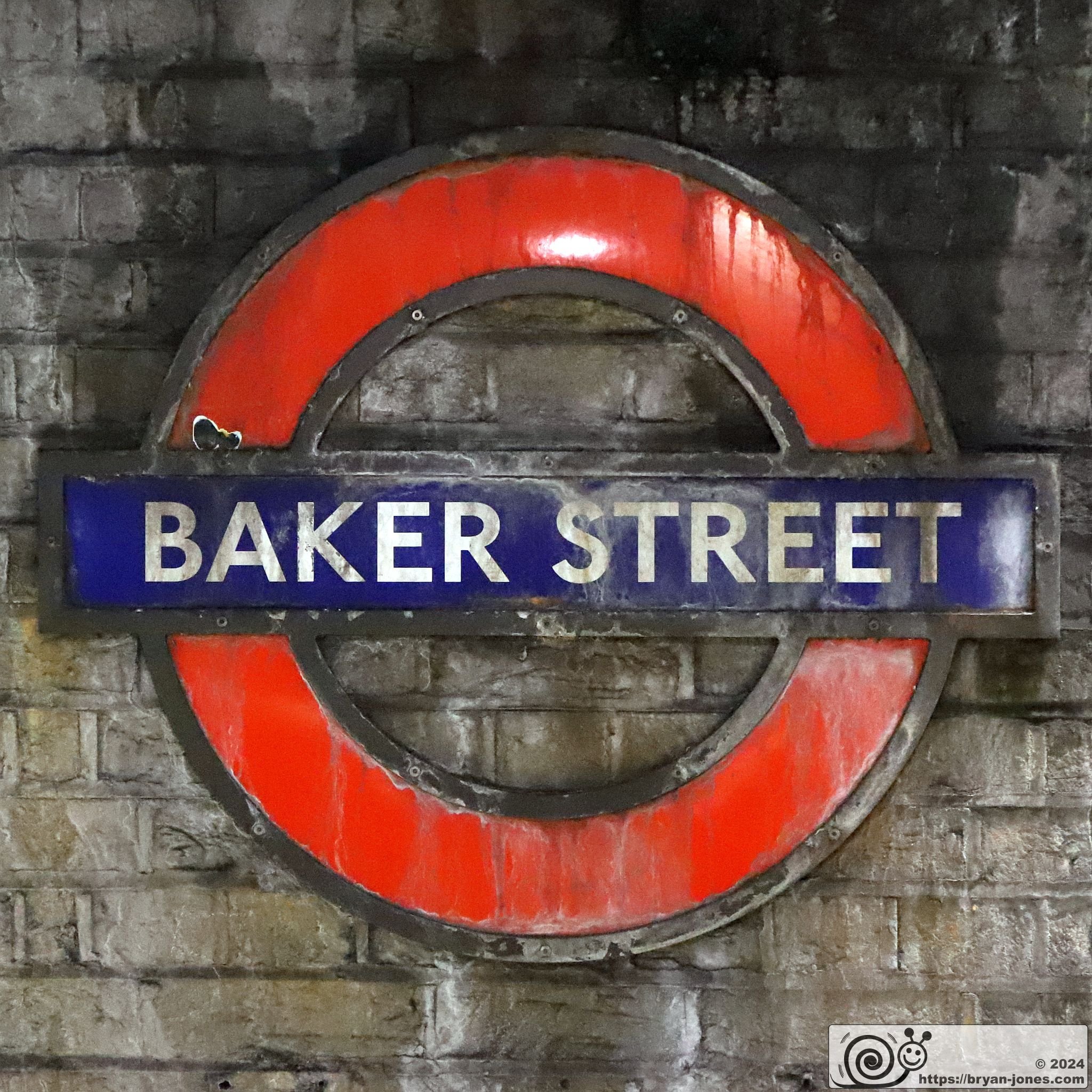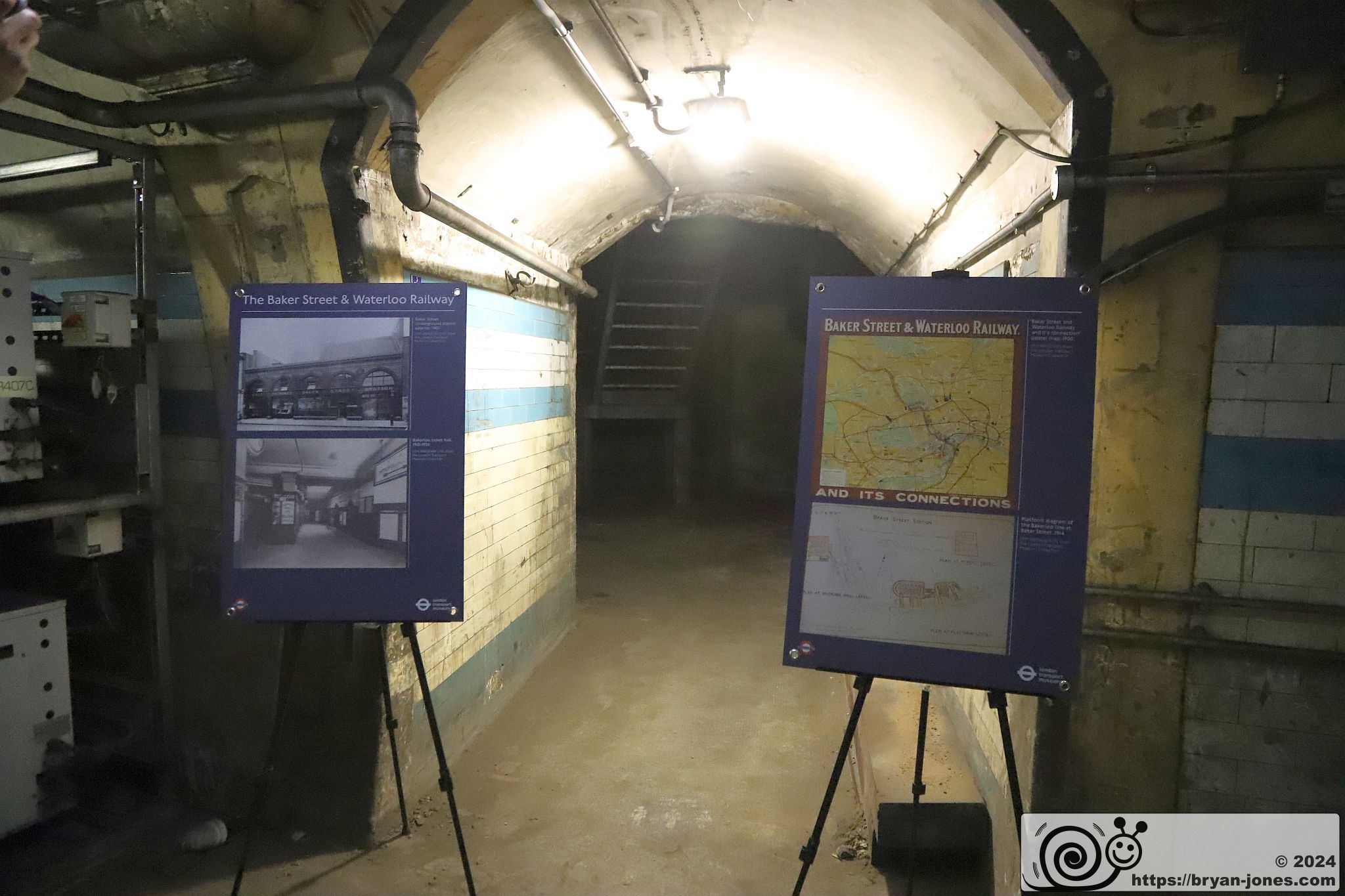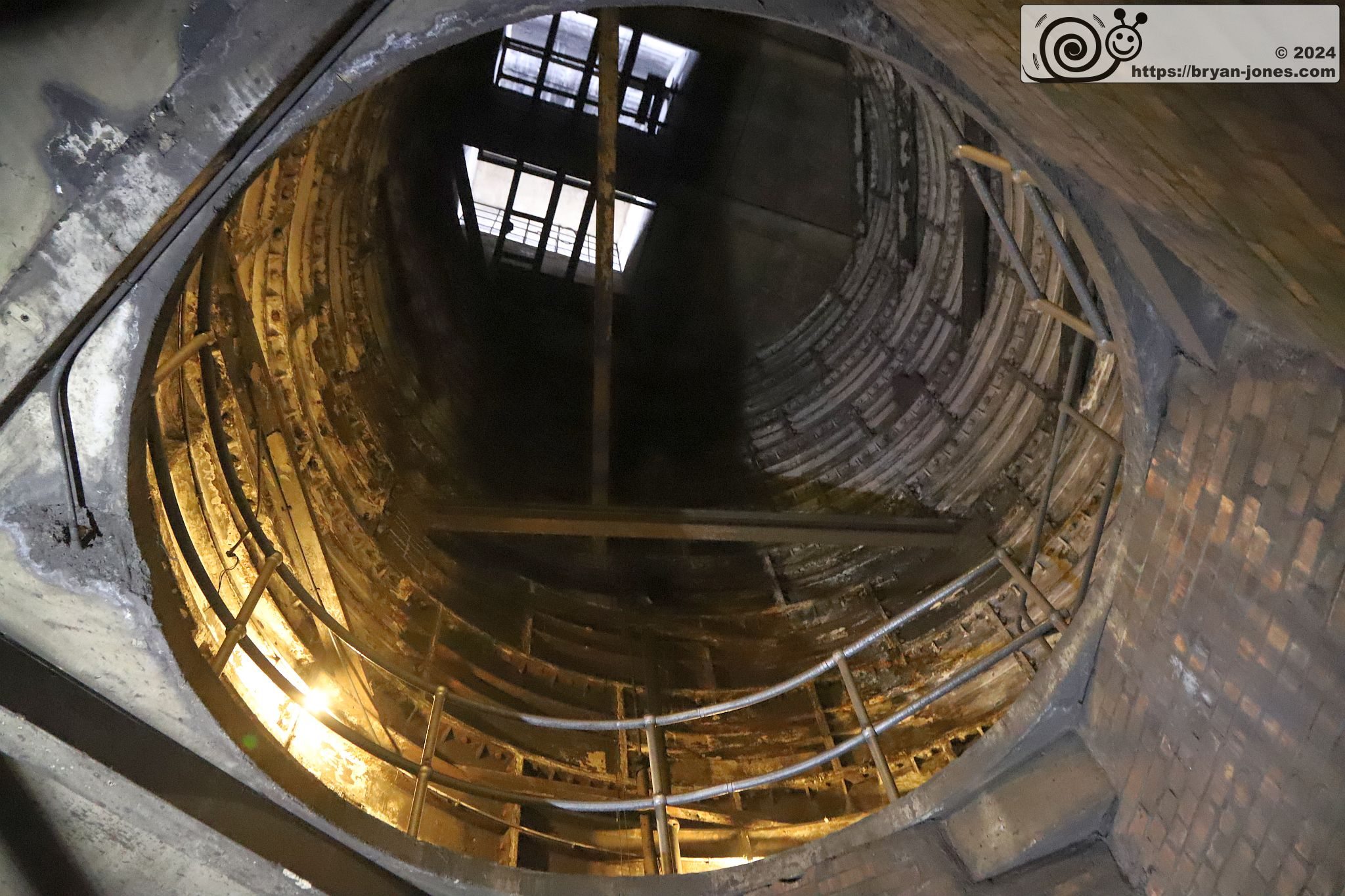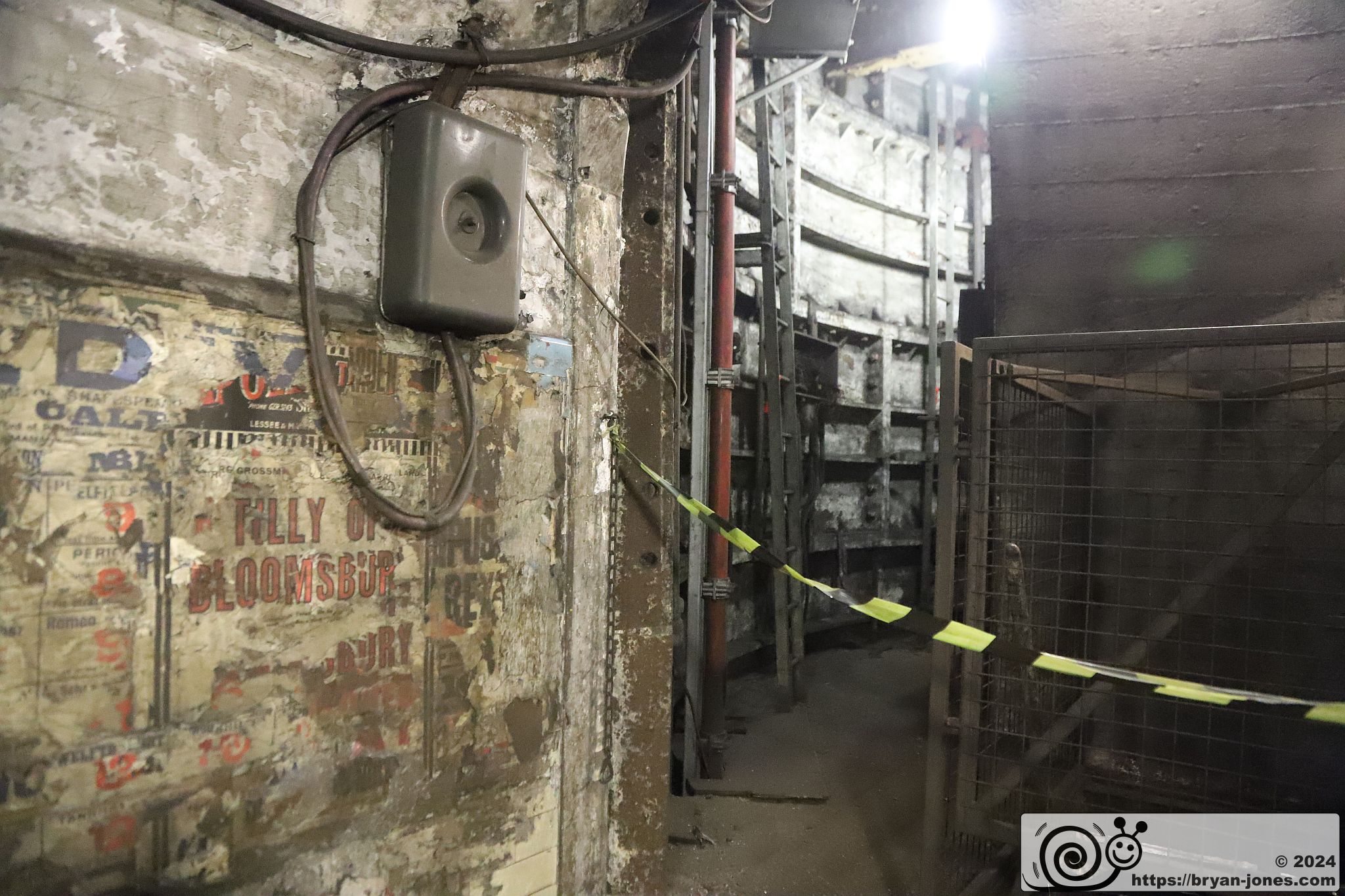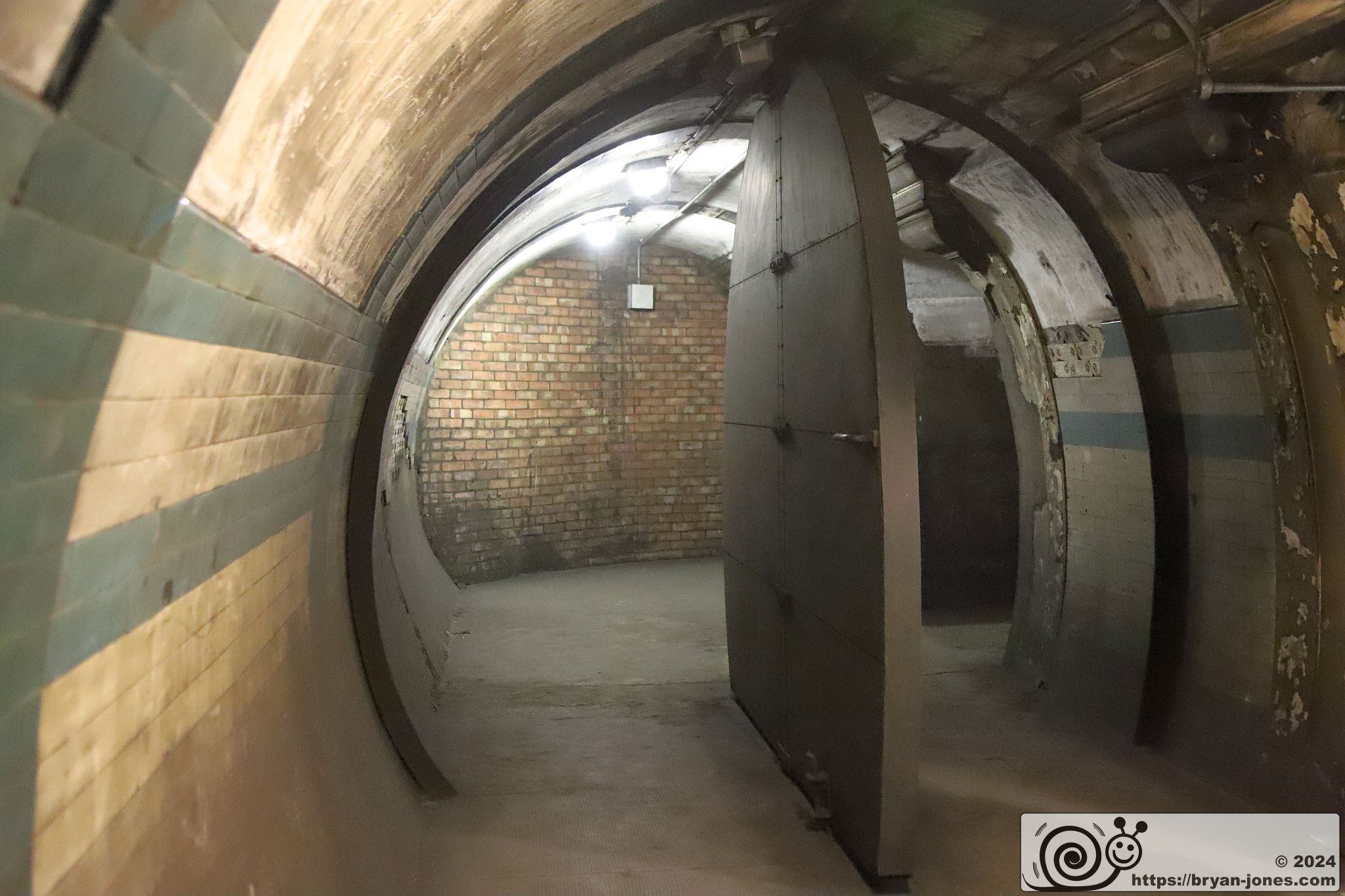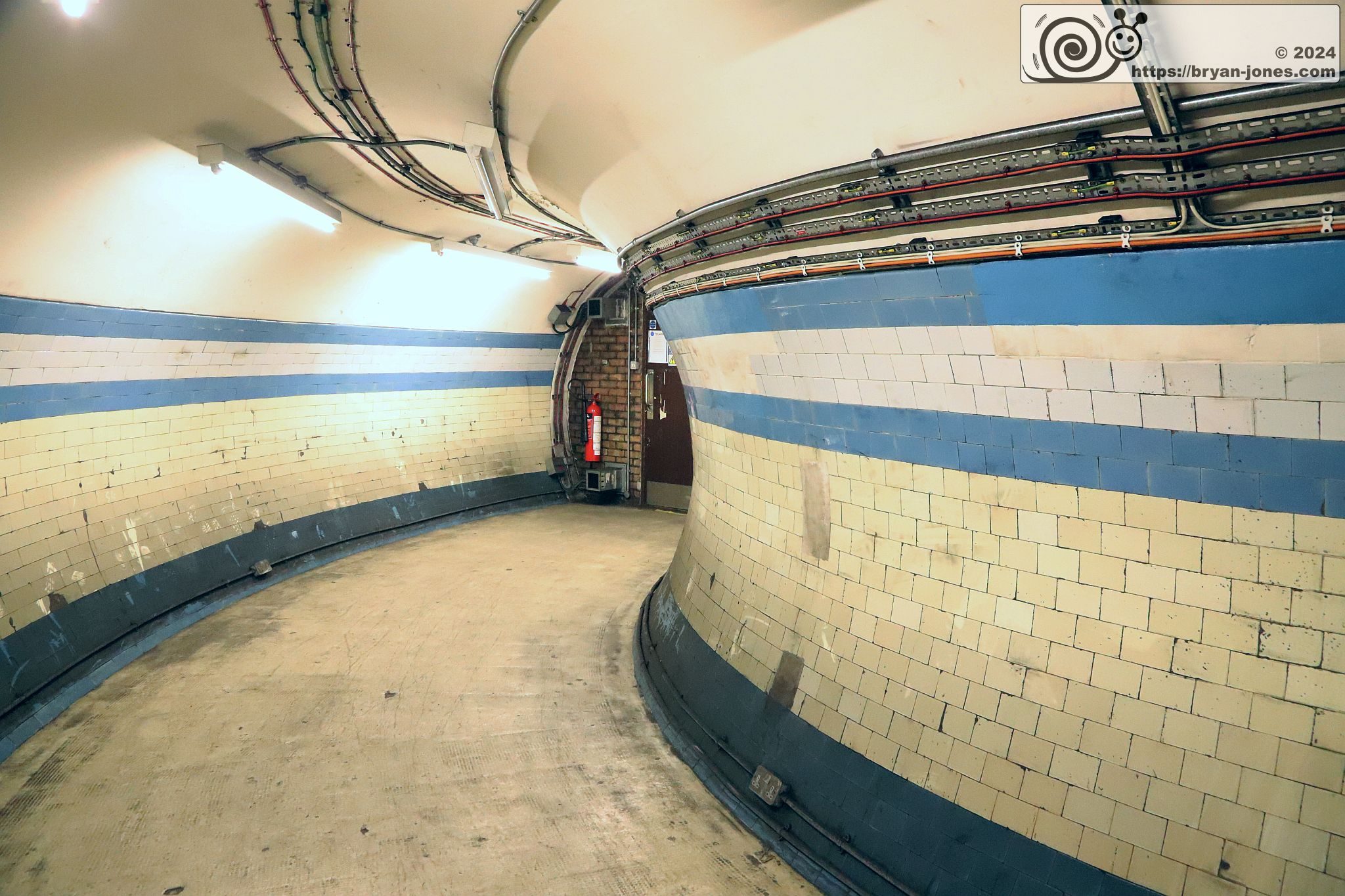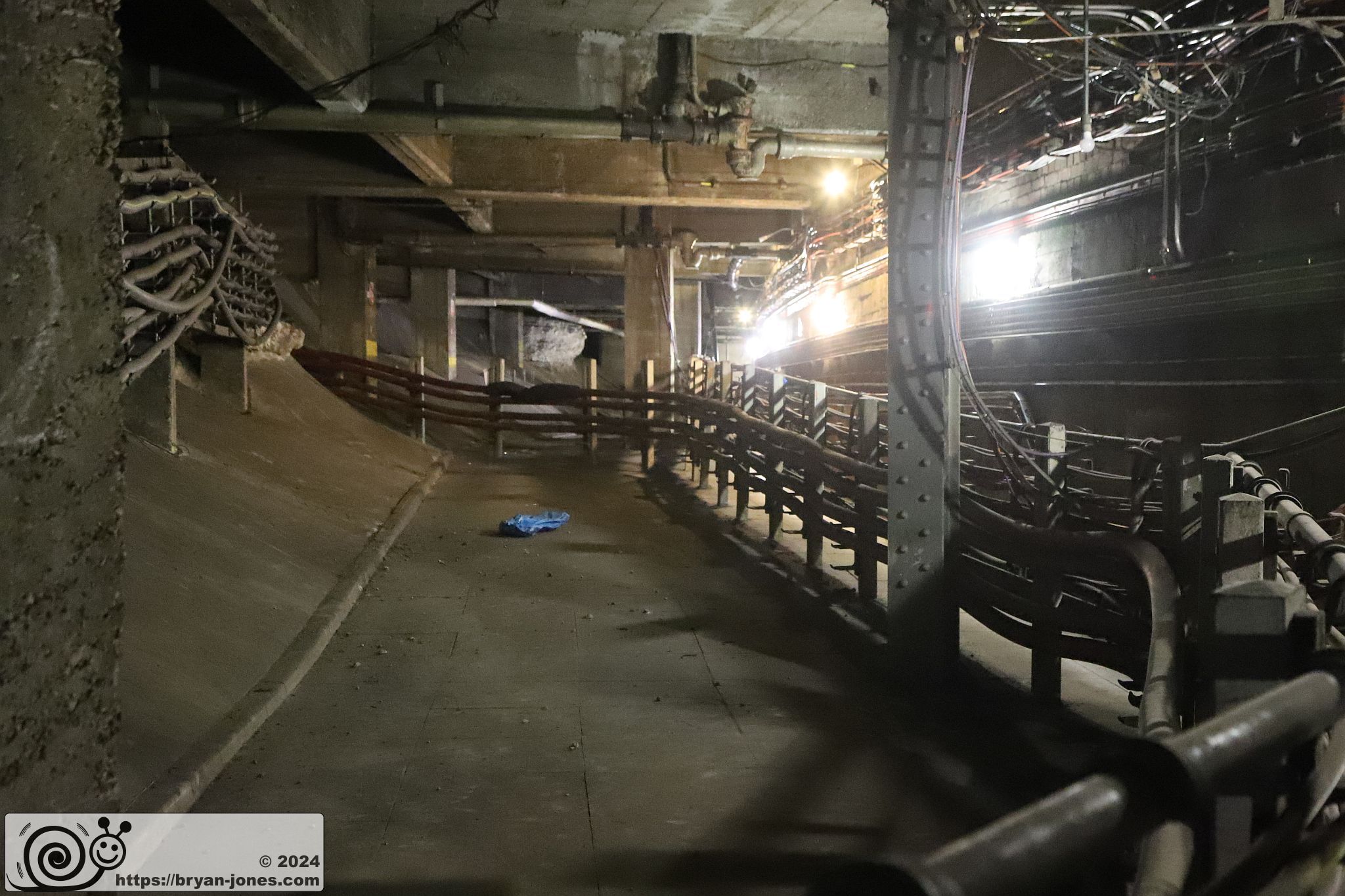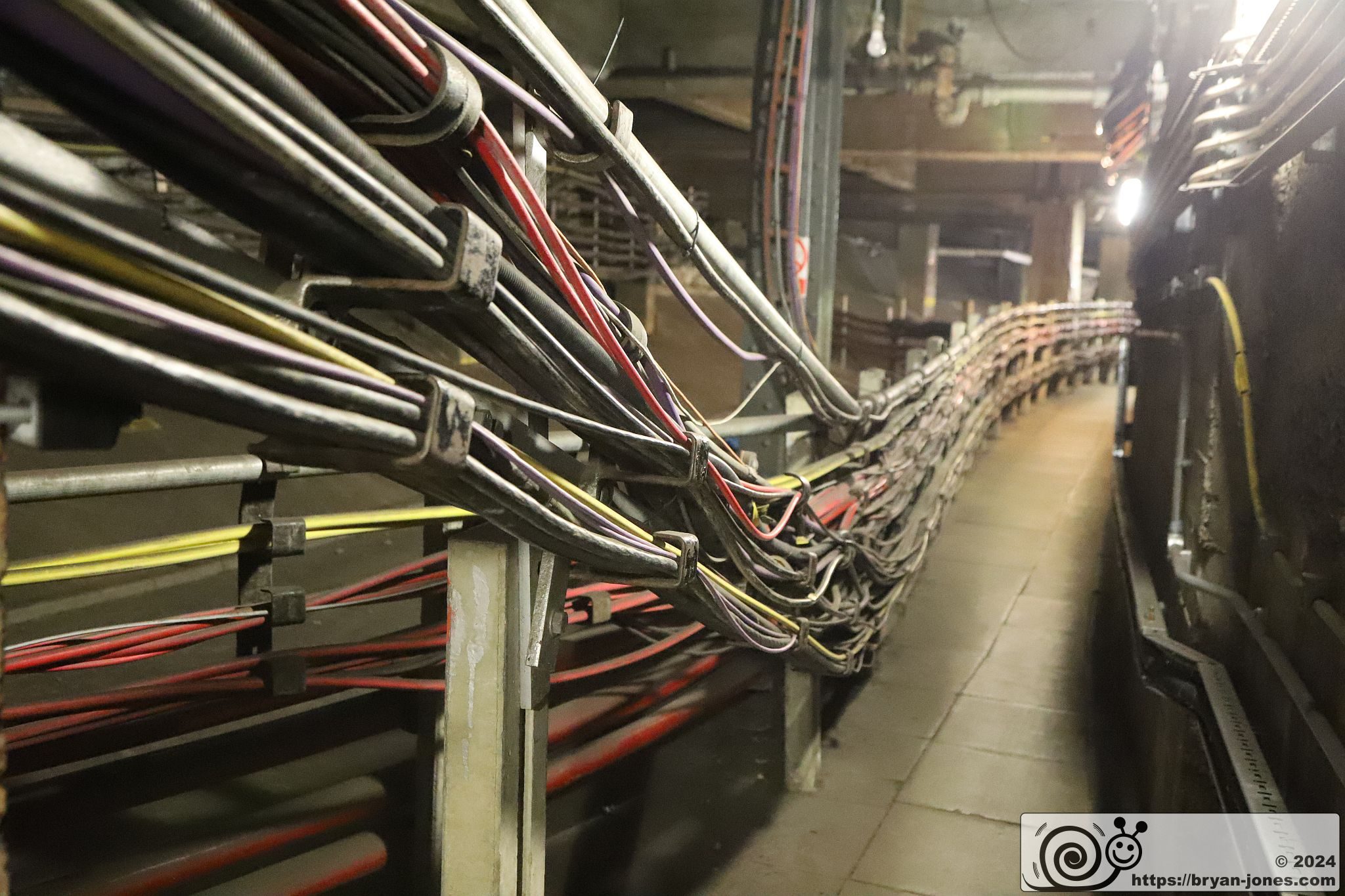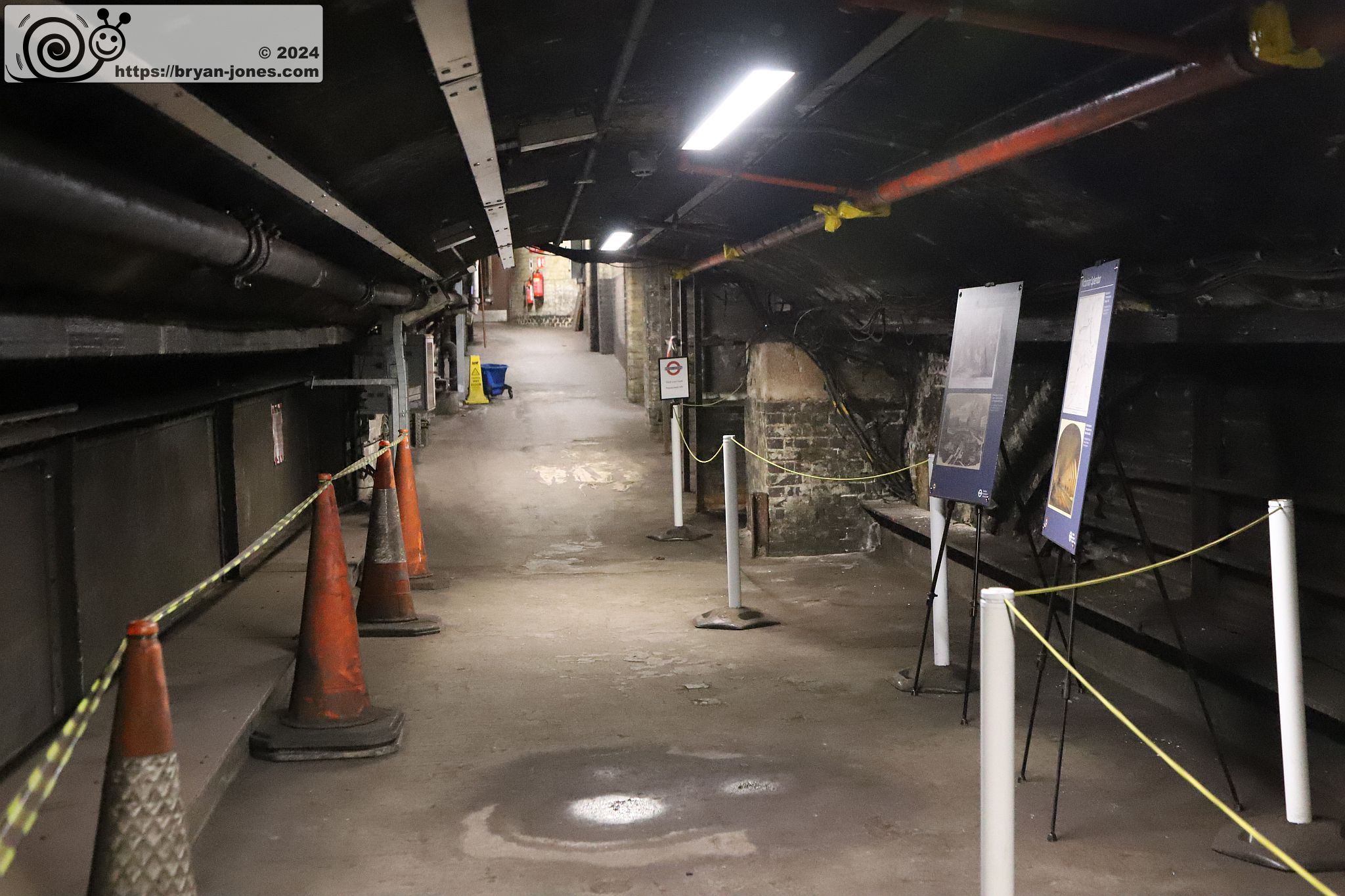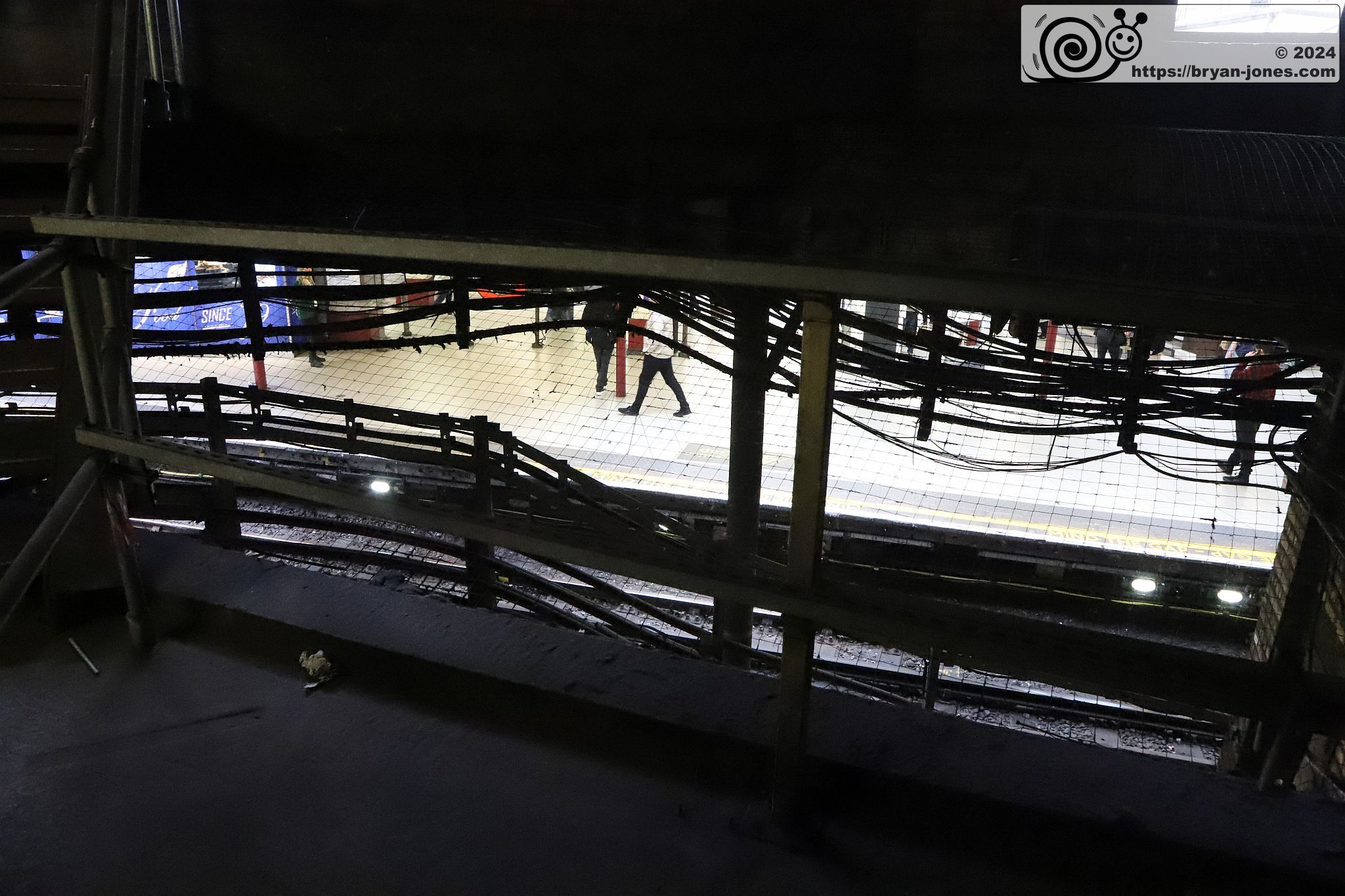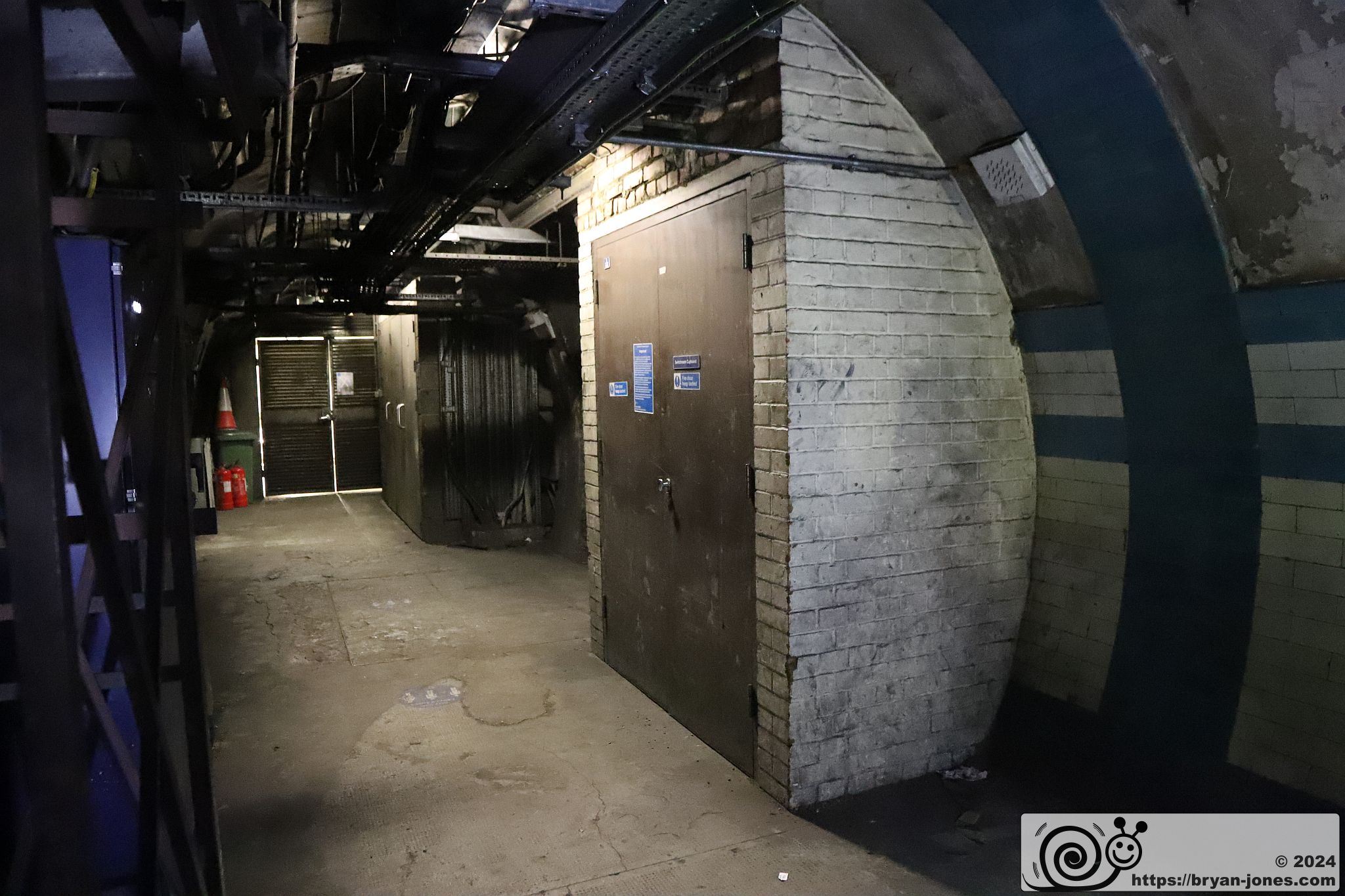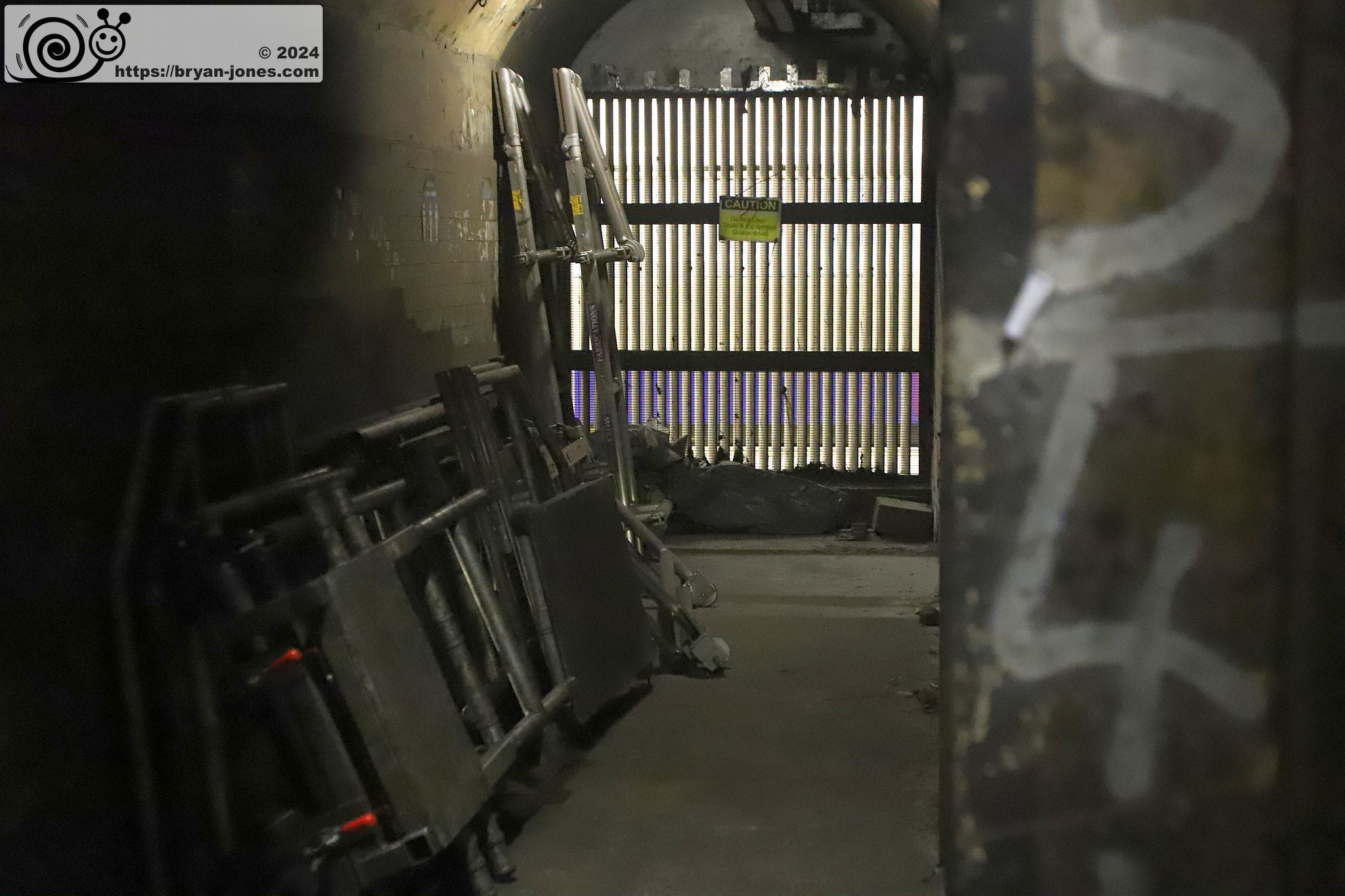Baker Street Underground Station
The Circle Line platforms at Baker Street, (opened in 1863) are well known as the oldest part of the oldest underground system in the world.
The London Transport Museum (see below) runs Hidden London tours to take visitors through a maze of doors into the areas passengers never see.
It’s a tour through (in parts) a smelly, dark, filthy environment – in other words – it’s fantastic!
Lift Shafts
Lifts carried passengers down to the early deep level London Underground stations. Starting with Earls Court in 1911, escalators started to replace lifts as they could carry far more people an hour. Instead of being filled in, the lift shafts started to be used for ventilation to make life more comfortable for the passengers.
Lots of tube stations have old lift shafts hidden from view behind very anonymous looking doors.
Baker Street is no different. What is now the Bakerloo line was originally access by lifts. Since shortly after World War Two, the lift shafts at Baker Street have not had lifts. Those lift shafts are now used to provide ventilation, helping to calm the worst of the heat in the summer months.
The 360 virtual tour lets you look up the former lift shaft.
Hidden London’s display boards in the former passenger circulating area where the lifts used to be located.
Original advertising posters can be seen at the entrance to another lift shaft where the lift doors would of opened.
Tile Details
The London Underground is well known for the tiles decorating the stations. A lot of the earlier tube stations have differing tile patterns and colour schemes to help passengers identify where they had got to on their journey without needing to spot the station signs.
On the curving tunnel shown, looking carefully, the tiles on the right (inside of the bend) are half the size of those to the left.
Gents Toilets
Behind the westbound Circle Line platform are some remnants of the original entrance and station facilities.
The 360 virtual tour shows the former gents toilets with a fireplace set into the wall to keep the winter chills away.
Under The Metropolitan Line Platforms
Beneath the curved platforms used by the Metropolitan Line, there is a cavernous aptly named “The Cathedral” by station staff. The space is used to run the forest of cables required to run a busy railway system.
Behind The Facade
London Transport Museum’s Hidden London tours take people to parts of London Underground normally completely off limits.
I’ve been on most of the tours over the last couple of years. They are all excellent. My favourites have to be Charing Cross and Kingsway Tram Tunnel.
- Aldwych: Used for historic films and Prodigy’s “Firestarter”
- Baker Street: The world’s oldest underground station
- Charing Cross: Very long construction tunnels and see where films are made
- Clapham South: Huge air raid shelter and its influence on Brixton
- Down Street: Used by Winston Churchill to escape air raids
- Euston: Huge numbers of posters from the 1960s
- Holborn: The other end of the Aldwych branch
- Kingsway Tram Tunnel: Huge sub-surface space for tram
- Moorgate: Lots of tunnels to walk through and a huge fan
- Piccadilly Circus: See behind the mysterious platform grills
- Shepherd’s Bush: Ventilation and air raid shelter tunnels
